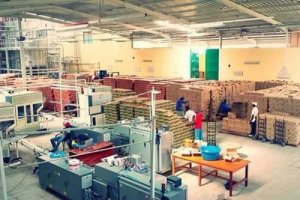Factory gate prices in Cameroon increased by 16% year-on-year in Q2 2022, the national stats institute revealed in a recent industrial producer price index (IPPI). In Q1, the increase was 15%.
These price hikes, INS said, were mainly driven by the extractive sector, which is still suffering “the global rise in hydrocarbon prices following the Russian-Ukrainian crisis and the post-Covid-19 recovery”. In this sector alone, factory gate prices have increased by 42.4%, against more than 30% in the first quarter, up 12.4% QoQ.
The metallurgy and metal product manufacturing sector remains the second largest contributor with an increase of 1.6%, compared with 23% in the first quarter. Next come “leather working and manufacture of leather goods (+19.7%), motor vehicle manufacturing (+14.3%) and food processing (+10.9%),” the INS says.

The overall increase in production costs since the beginning of 2022, due to a gloomy international context that has led to a surge in the price of raw materials and sea freight, has been passed on to consumers. The consequence is widespread inflation in the local market, exceeding the 3% threshold allowed within the CEMAC region.
The IPPI measures the evolution of transaction prices of industrial goods produced in Cameroon, which are ex-factory prices paid to producers, excluding taxes and subsidies, and excluding transport margins. It refers to the secondary sector and takes into account the following sections of Afristat Member States’ activities: mining and quarrying; manufacturing; electricity and gas production and distribution; water production and distribution, sewerage, waste management, and remediation.
In Cameroon, this index is based on a sample of 103 companies covering 328 products, 177 ranges, 48 classes of activity, 38 groups, and 24 divisions. “The sample of companies surveyed covers the entire industrial sector and was selected according to the cut-off method, to include about 80% of the turnover of each division,” INS explained.
Brice R. Mbodiam